Circle Hooks - When and Where to Use
Experienced angler John Eichelsheim is a huge fan of the circle hook. He shares some history behind, and techniques for using this key piece of terminal tackle.
Circle hooks are my go-to when fishing with bait. They almost always hook fish in the mouth, usually in the corner at the hinge of the jaw, and once hooked, fish seldom get off.
Circle (or more accurately ‘recurved’) hooks are based on the ancient fish-hook patterns of Southeast Asia and Oceania. Similar hooks have been used around the world since Neolithic times.
Hooks of this type were brought to New Zealand by Maori settlers as part of a cultural suite that included tools, clothing styles, plants and animals from the tropical islands of eastern Polynesia.
In New Zealand, Maori made hooks (matau) and fishing lures from local materials: wood, bone, shell, ivory and stone, often in combination. Later, after Europeans brought metal to New Zealand, Maori were quick to see its advantages, fashioning iron nails into fish hooks usually modelled on traditional recurved styles. But as relatively cheap, mass-produced European-style J-hooks became available in the early 1900s, traditional hook styles slowly fell out of use.
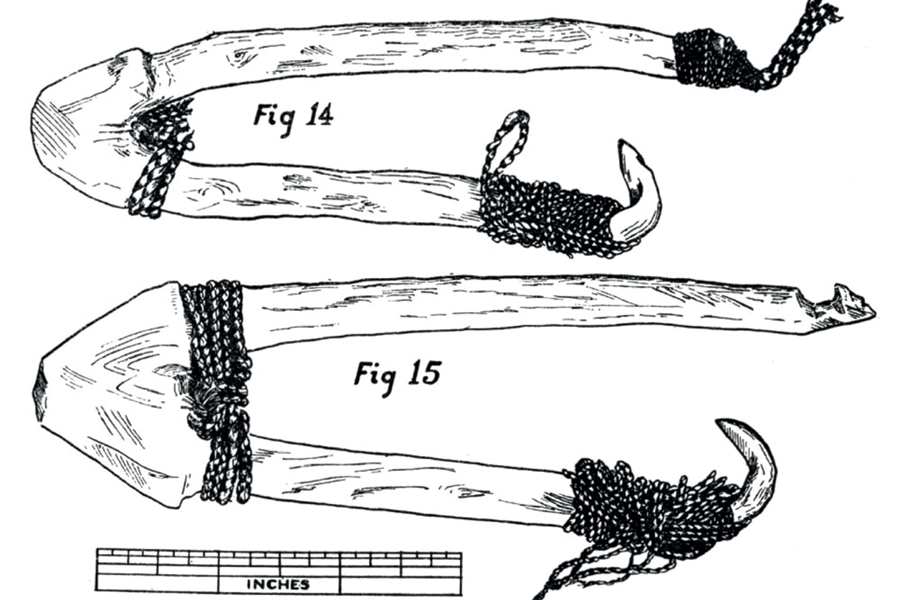
When European materials like iron and copper became available, M?ori adopted them, but retained their traditional 'circle hook' design.
Recurved hooks were then hardly used in New Zealand until this century. Granted, a few recreational anglers adopted ‘Japanese longline hooks’, a classic recurved hook design, in the 1960s and 70s, but the majority employed J-hooks, as they still do.
J-hooks get the name because they are shaped like a J, with a relatively wide-gape and the point/barb on a parallel plane with the hook’s shank. J-hooks can be straight (shank and point/barb inline), or the point can be kinked to one side of the shank (offset or kirbed). J-hooks act like a gaff to hold fish. Such hooks are still very popular today.
The salient feature of circle/recurved hooks, sometimes also called C-shaped hooks, is a point that curves inwards towards the shank. Circle hooks vary widely in the degree of curvature, shank length and distance between the shank and point, but they all look different to J-hooks.
They function differently, too. Whereas a J-hook usually has to be ‘set’ by applying pressure to the line so the hook point penetrates the fish’s body, hooking a fish on a circle hook usually requires no more than steady pressure on the line. This is generally sufficient to rotate the hook into the corner of a fish’s mouth.
In many cases, fish hook themselves with no input from the angler, which is why circle hooks are invariably used for commercial longline fishing.
Traditional Maori/Polynesian hooks also operated somewhat differently to modern steel circle hooks where the baited hook is taken into the fish’s mouth. In modern circle hooks, the shank acts as a lever when it comes free of the mouth as the fish swims away with the line under tension, causing the point to penetrate behind the jawbone when the hook has rotated.
With traditional hooks, there is no need for the barb to penetrate. Polynesians used deliberately large hooks that were too big for fish to swallow. As a fish tried to remove the bait from the hook (bait was usually tied to the bend of the hook, leaving the point and shank free), the hook’s relatively blunt bone barb/point acted as a guide to direct the fish’s jawbone between the point of the hook and the shank and into the bend of the hook. The bend then acted as a trap to hold the fish, and the attached line, when under tension, pulled against the direction of the point, thus preventing the fish from escaping.
Modern circle hooks are usually small enough to be taken into a fish’s mouth, and the points are sharp enough to penetrate, which makes their hold more secure. However, they still behave in a similar way to traditional hooks, usually lodging in the corner of the jaw. It might be marginally more challenging to hook fish using circle hooks than with j-hooks (although practice makes perfect), but once they’re hooked, fish seldom get off a circle hook.
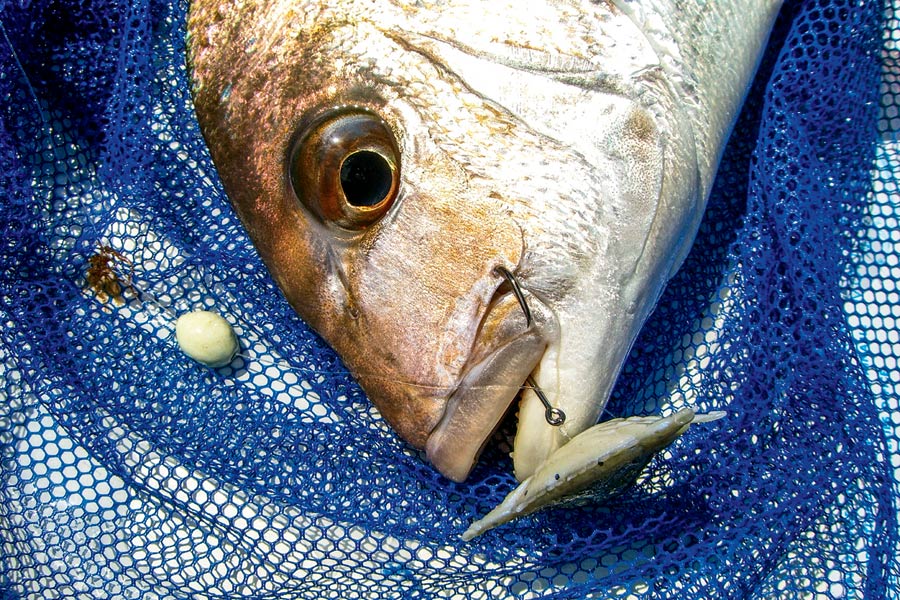
A nice snapper hooked in the corner of the mouth.
There are still many anglers who don’t consider using circle-style hooks in their day-to-day fishing, especially if that fishing is stray-lining, but I use circle hooks all the time (including for stray-line fishing). Once you adjust by resisting the temptation to vigorously set the hook (strike) and learn to tighten up on the line without jerking, you’ll consistently hook fish on circle hooks.
When stray-line fishing, I use one circle hook or two, usually fixed, depending on bait size and how lazy I am on the day! The hook-up ratio is marginally better with two hooks, but one is much easier to rig, especially in a rocking boat. One hook works fine, provided you wait until the fish has a firm hold on the bait and has begun to swim away with it before you put pressure on the line. That’s the best tactic with two hooks as well, but you have a bit more latitude with the timing.
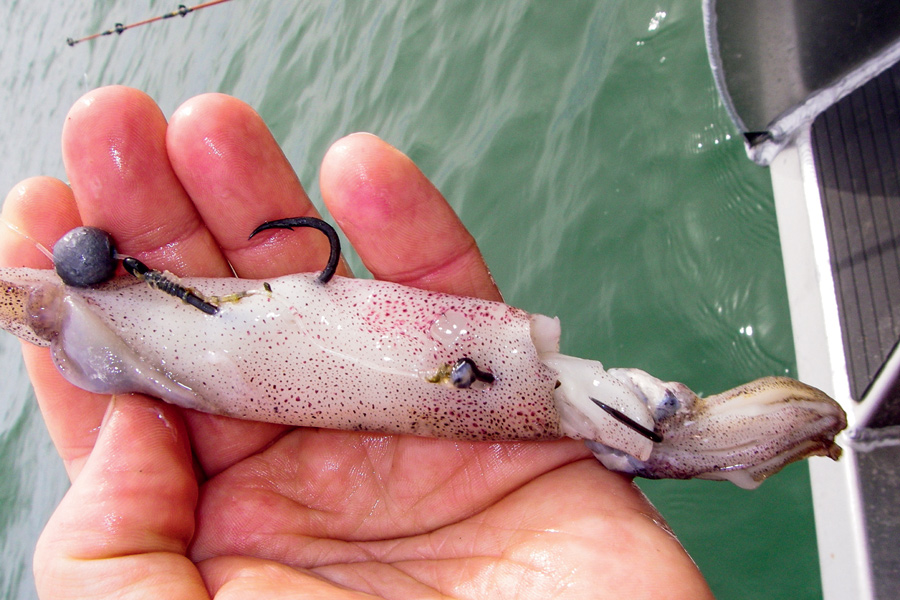
Two circle hooks can be used in tandem to increase hook-up rate.
You can strayline with an overhead reel in free-spool, using thumb pressure on the spool to progressively tighten the line when you get a run, but you risk friction burns to your thumb using this method with big fish. It’s often better to leave the reel in gear (or the bail arm closed with a spinning reel) and hook the fish by ‘bowing’ the rod towards the fish as it pulls away. Hold the rod in position until the line tightens and then pull back slowly and smoothly. If the fish is big enough to be worth catching, you’ll find yourself with a solid bend in your rod most of the time.
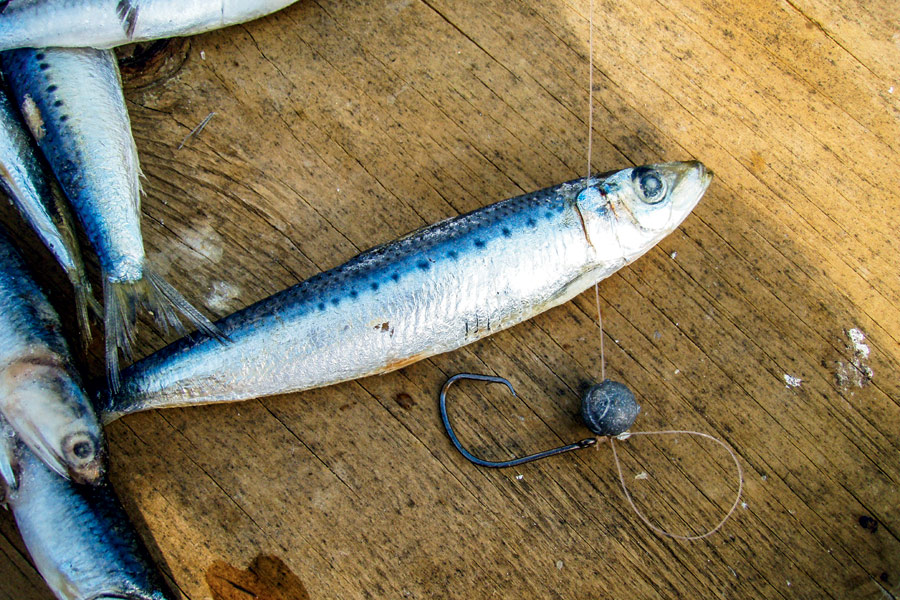
Circle hooks can be effectively used in strayline rigs.
It’s a very similar technique when fishing ledger rigs with circle hooks: when you get a bite let the fish pull the rod tip down towards the water (‘bow’ the rod) and let everything tighten up before smoothly lifting the rod against a tight line.
Circle hooks can be fished using any sort of tackle, though for stray-line fishing I like a relatively soft-tipped rod with a progressive action and a strong butt section. The soft tip allows the fish to turn with the bait before the tension comes on, while the progressive action assists in smoothly setting the hook in the corner of the fish’s mouth as the line tightens and the rod bends. Nylon monofilament line can be an advantage when stray-line fishing. A bit of stretch seems to aid in setting circle hooks and the way the line sinks (most braids float) does a better job of presenting the bait. Often by the time you feel the bite, the fish has already had time to turn with the bait, so with mono, you can tighten up straight away.
With low-stretch superbraid, however, you feel every contact, and so does the fish on the other end of the line. Registering your presence, fish may become suspicious and drop the bait before they have turned away with it, making stray-line fishing with braid and circle hooks a challenge.
|
|
|
Fishing Reports Visit Reports
Canterbury Fishing Report - 04/04/24
Fish galore! Coming off the back of Easter Weekend and with some very nice weather... Read More >
Raglan Fishing Report - 04/04/24
Excellent snapper action There is some excellent autumn snapper fishing straight out and up the... Read More >
Bream Bay Fishing Report - 04/04/24
Whangarei Harbour fishing well Like the weather, the fishing has been patchy throughout Bream Bay... Read More >
Hauraki Gulf Fishing Report - 04/04/24
Party time! Inshore fishing and offshore fishing are on now. It’s that perfect time of... Read More >
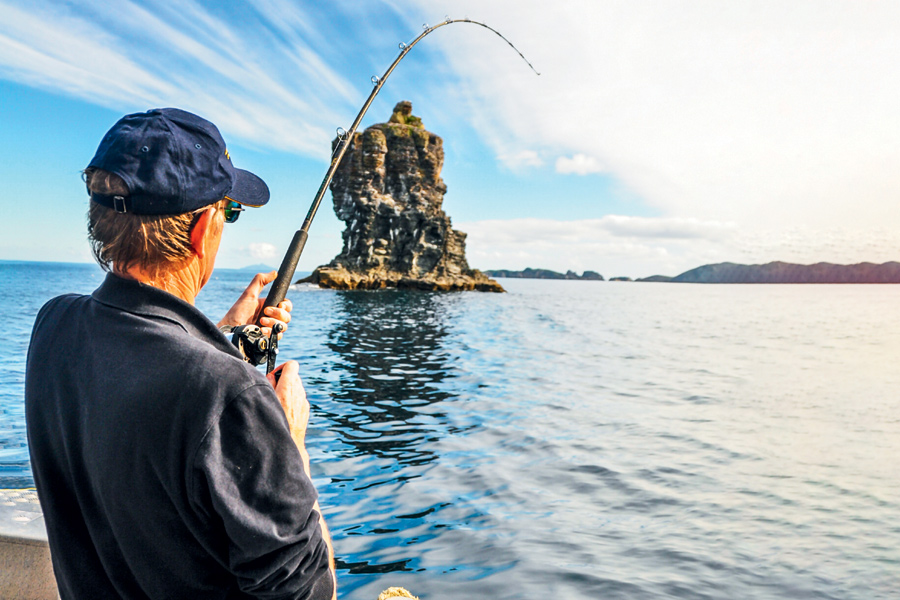




Comments